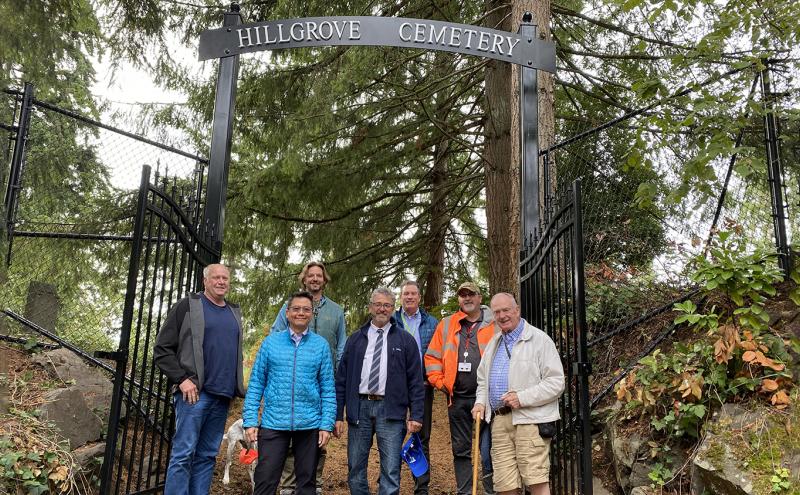Several years ago, the Port of Seattle launched the Flight Corridor Safety Program. This ongoing program improves safety during takeoffs and landings at Seattle-Tacoma International Airport (SEA) by replacing trees that have grown or will soon grow into the airport’s airspace with native, lower-height trees. This program helps the Port of Seattle meet Federal Aviation Administration (FAA) regulations, ensuring safe flight operations while minimizing its impact on the environment and surrounding communities.
Most of the identified tree obstructions were on airport property. While the Port had to remove these trees, it not only replanted more than four times as many with lower-growing varieties and native shrubs as it removed, but it also removed invasive ivy and other species that negatively impacted the health of the existing trees.
However, a smaller number of trees identified as obstructions were on private property, including six particularly large ones within the historic Hillgrove Cemetery just south of the airport in the City of SeaTac.
Many of the pioneer families who homesteaded and developed the Highline and Des Moines area were buried at Hillgrove along with their families. The cemetery parcel was originally part of a larger property homesteaded in 1890 by Frederick Kindling, a German immigrant. Kindling donated one acre of his property as a community cemetery reportedly in 1900.
Late in 2019, the Port began a series of conversations with Hillgrove Cemetery Board President Jim Langston and other board members about how they could move forward in a way that addressed public safety while honoring the cemetery’s cultural importance.
The board had limited funds available to assist with the property’s upkeep and over the years, the front fence had begun to show its age. The Port offered to provide regular maintenance of the property, including mowing and pruning, and to build a new, more secure, historically appropriate front fence and gate as a way to compensate for its impacts on the site.
The fence was completed earlier this fall and now, above the front gate is a striking arch that spells out the cemetery’s name.
Because the cemetery board also had a strong interest in preserving its history, the Port hired an archaeologist to conduct a comprehensive analysis and inventory of the cemetery’s graves using historical records, inspection of monuments and interpretation of ground penetrating radar data collected by the Port. Senior Archaeologist Barbara Bundy with Anchor QEA also identified several graves that lacked a monument or any marking signifying a burial. Barbara theorizes that some graves may have had wooden monuments that deteriorated or were removed long ago. The Port now retains a record of those who have been buried there to preserve the history.
All three items — the maintenance work, the new fence and the grave inventory — came together in an agreement last fall between the entire cemetery board and the Port.
The six trees were removed this past spring using methods ensuring that none of the grave sites were disturbed during the work. Replanting of lower-height trees at the site is expected to occur over the next few months.
In late September, Commission President Felleman, who initiated the effort to identify unique ways to mitigate the Port’s impact on the cemetery, visited the property with cemetery board members and Port staff to see what they accomplished and to congratulate all parties on the successful completion of the work. He also thanked the cemetery board for their willingness to work collaboratively with the Port on this sensitive site and for being such great custodians of the cemetery and its historic significance for South King County.
“I am deeply appreciative of how this creative collaboration between the cemetery board and the Port has made a valuable contribution to the preservation of the historical and ecological integrity of King County,” stated Port of Seattle Commission President Fred Felleman.
Jim Langston, Hillgrove Cemetery Board President, cited his appreciation for Port representatives Chipper Maney and Marco Milanese who worked closely with the cemetery board.
“It has been constructive and a pleasure working with the Port of Seattle on honoring the early settlers’ place of rest here in Highline and Des Moines,” he said.
